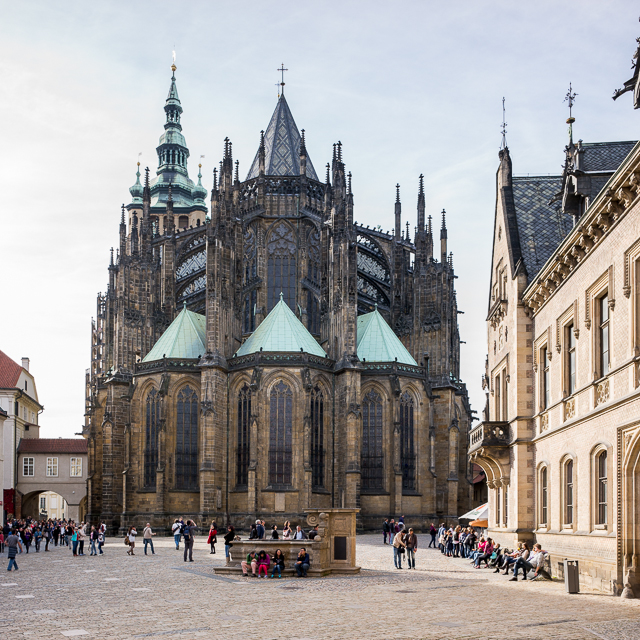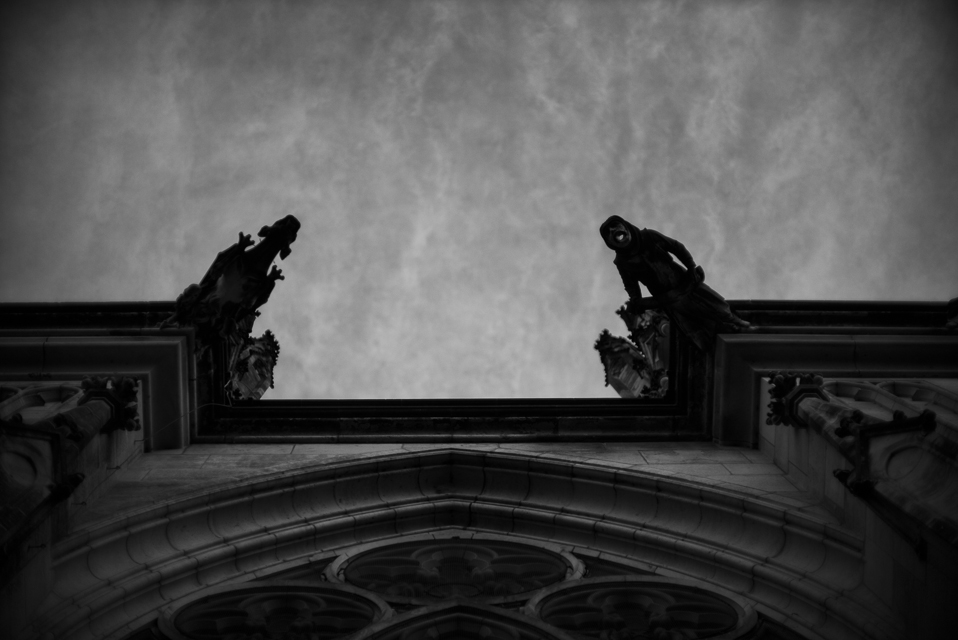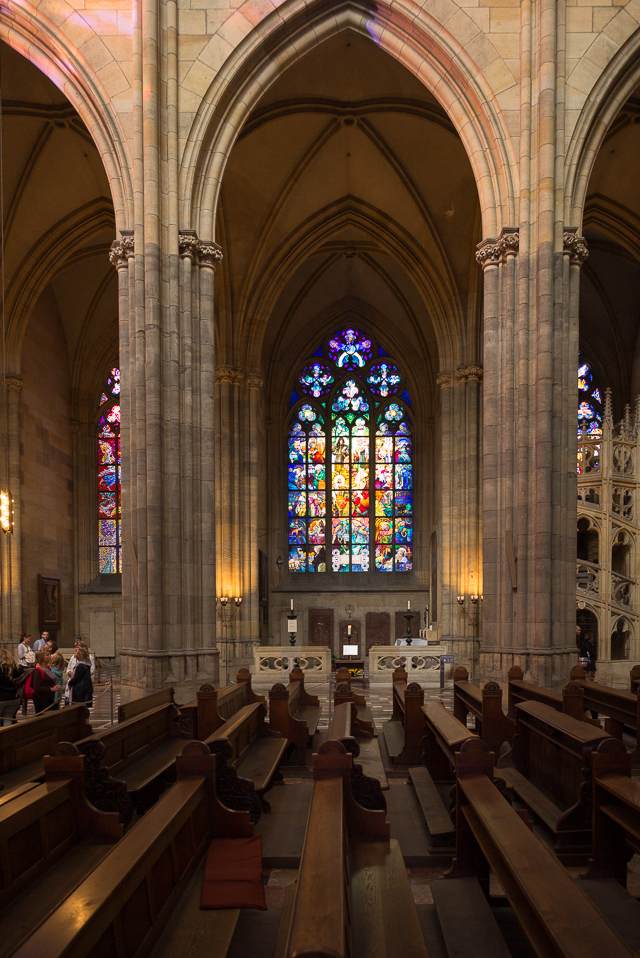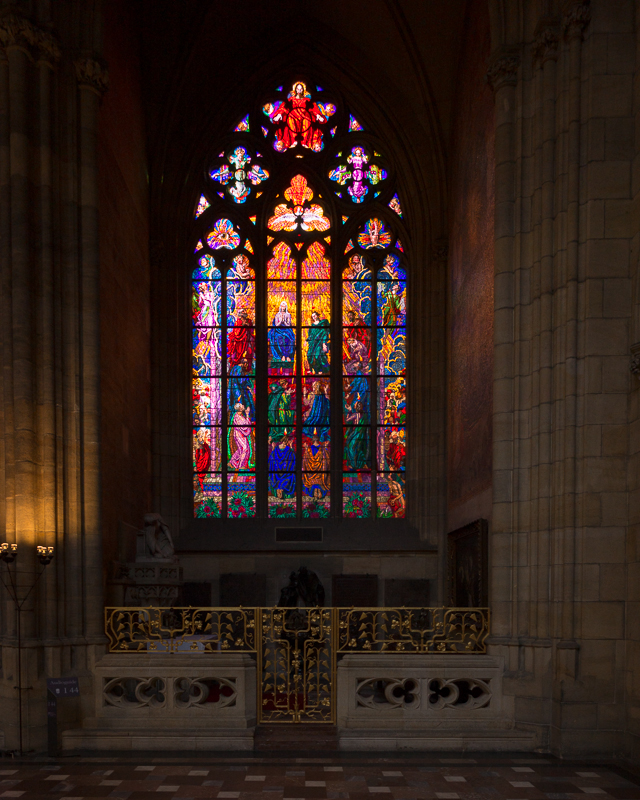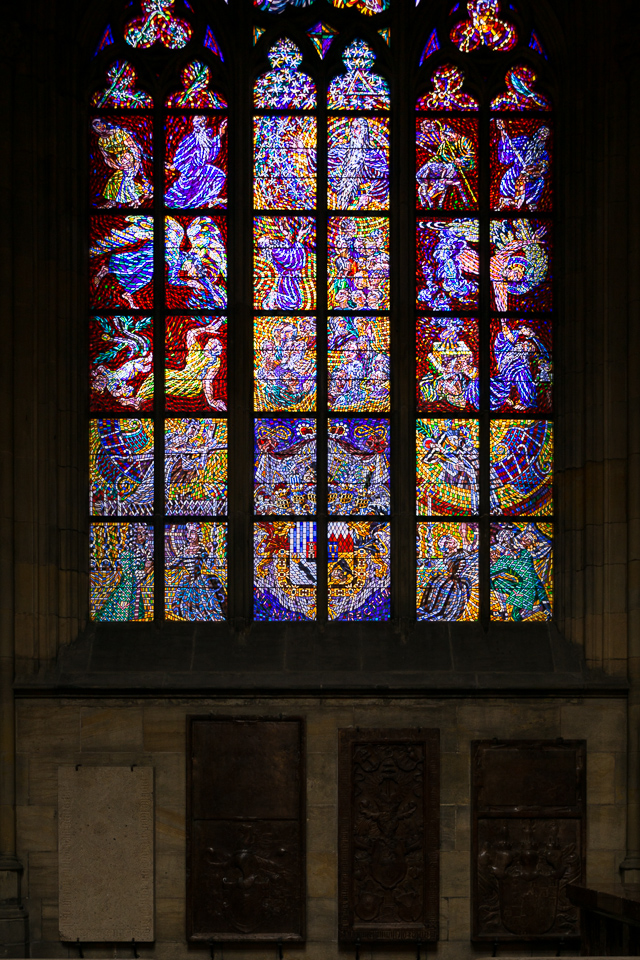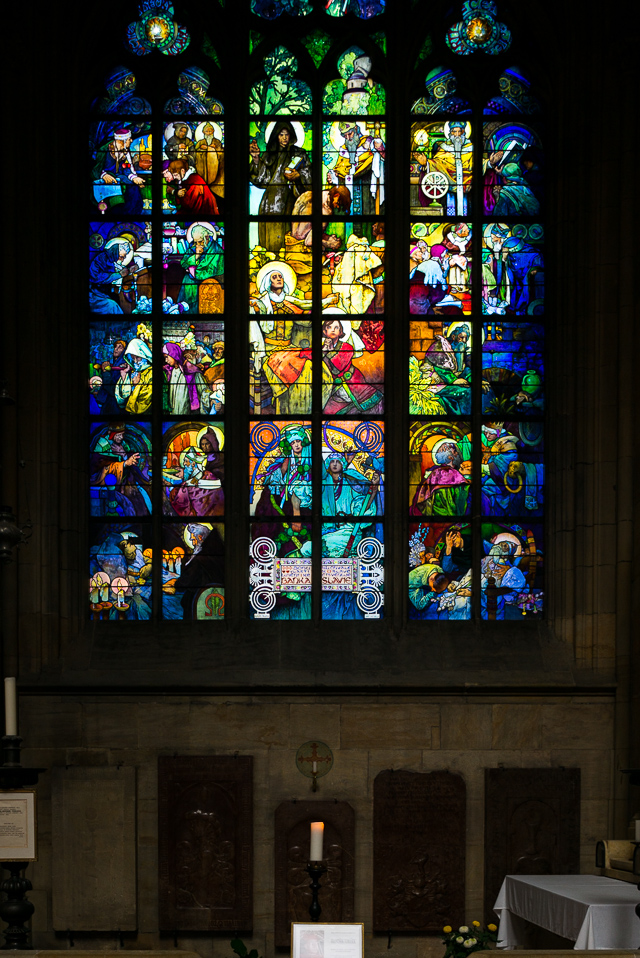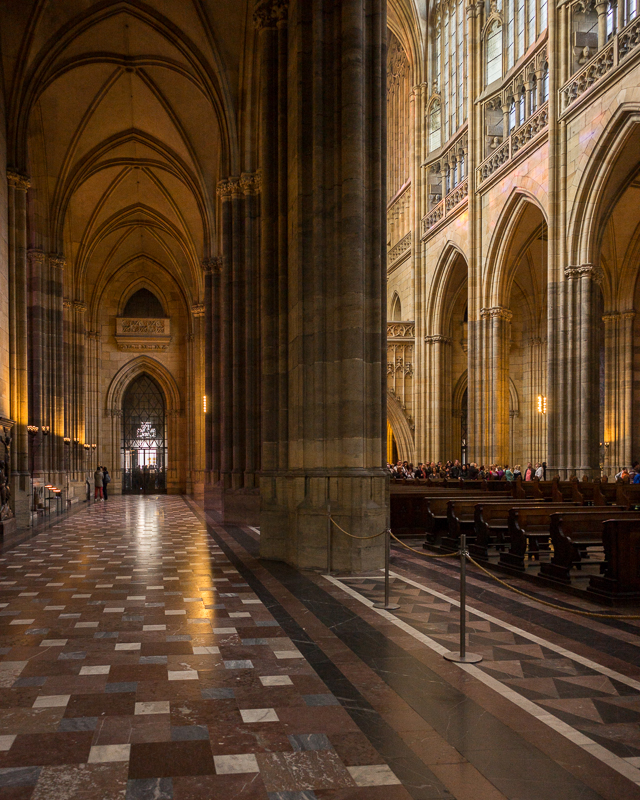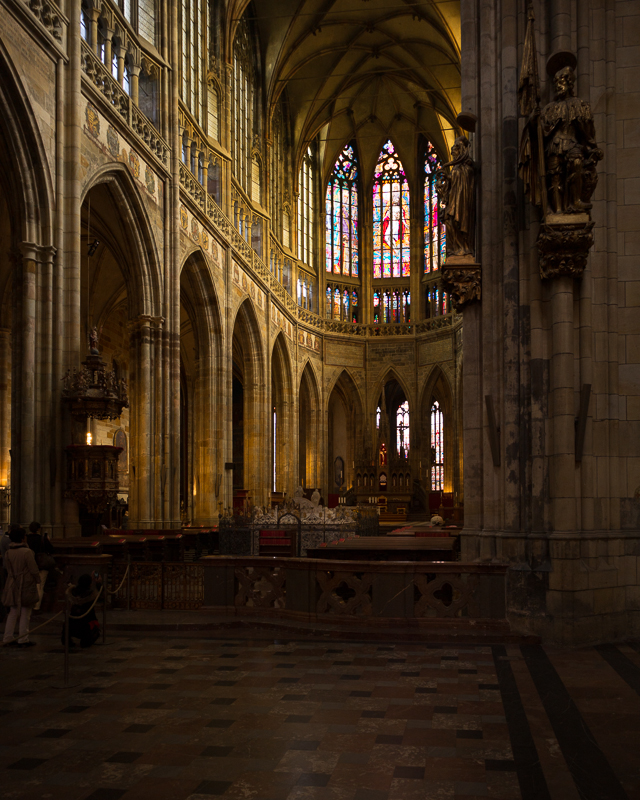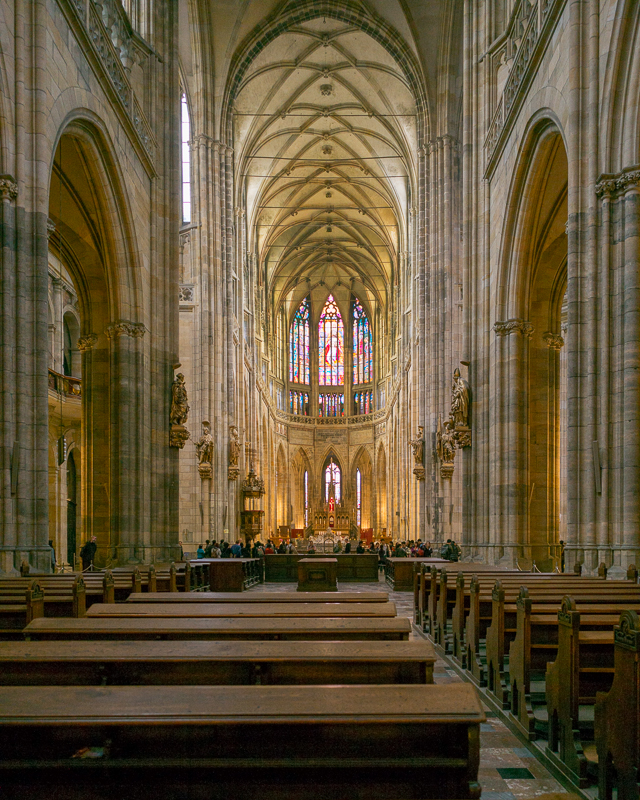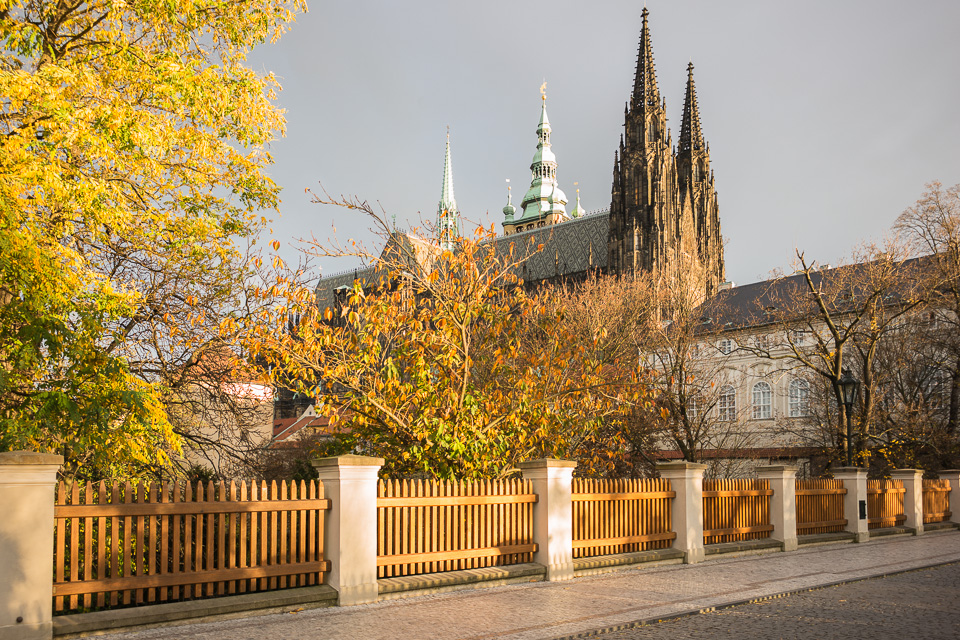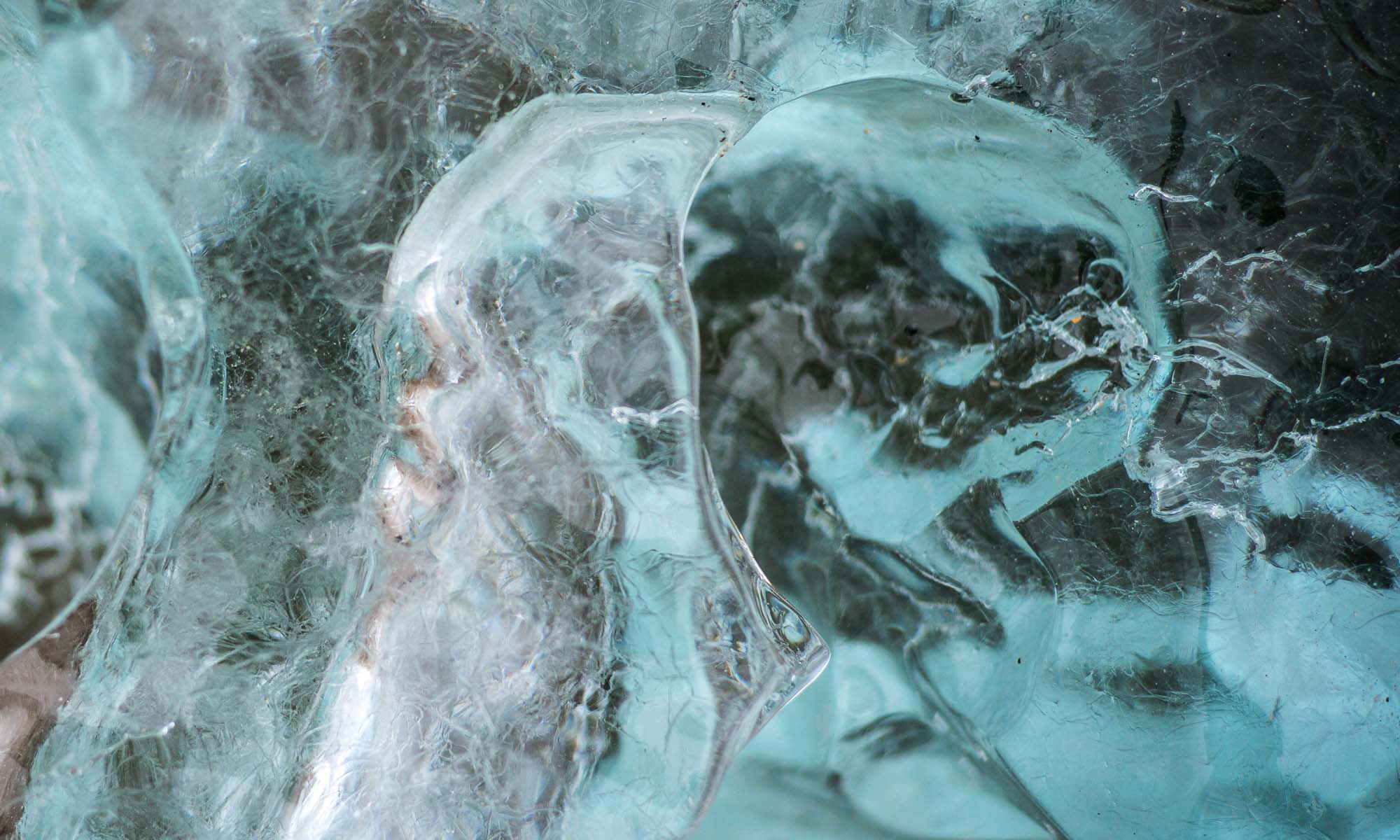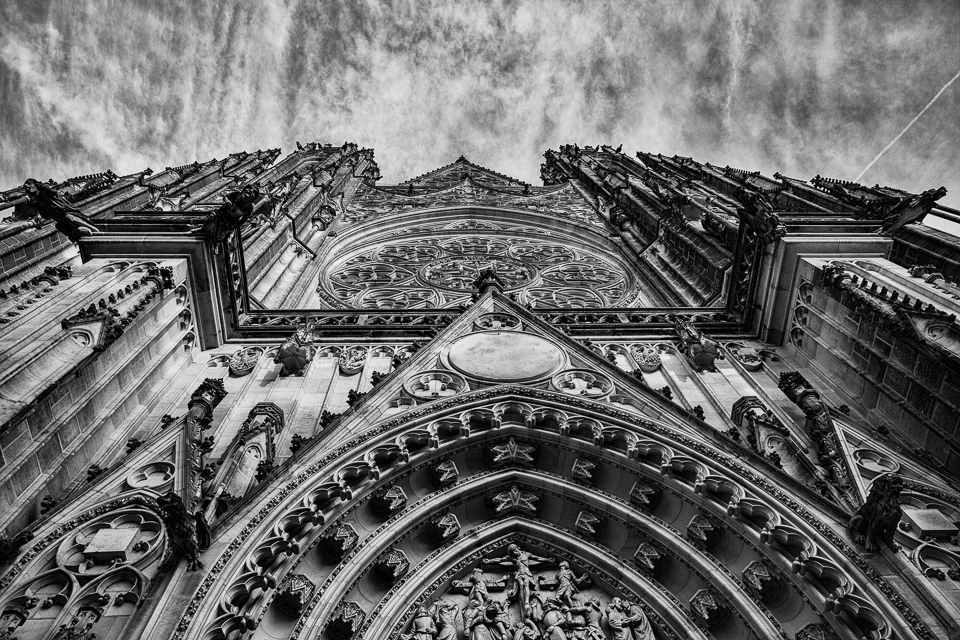St Vitus Cathedral in Prague is (currently) the worlds most recent gothic cathedral, begun in 1344 in late gothic style, finally consecrated in 1929. As such, it features a mixture of late-gothic, baroque, renaissance architectural styles, and stain-glass windows from as recent as the early 20th century by Alfons Mucha, Prague’s most celebrated artist in the last century.
The Cathedral was built in two major parts. The first, the eastern, part which houses the nave and the main window at the rear of the church was completed in 1399, with additional building continuing through to the 15th century despite damages from wars, fires and religious unrest. A provisional wooden wall sealed this completed part of the church so it could be used in the centuries that followed, until plans were put in place in the mid 19th century to complete the cathedral within the spirit of the original designs.
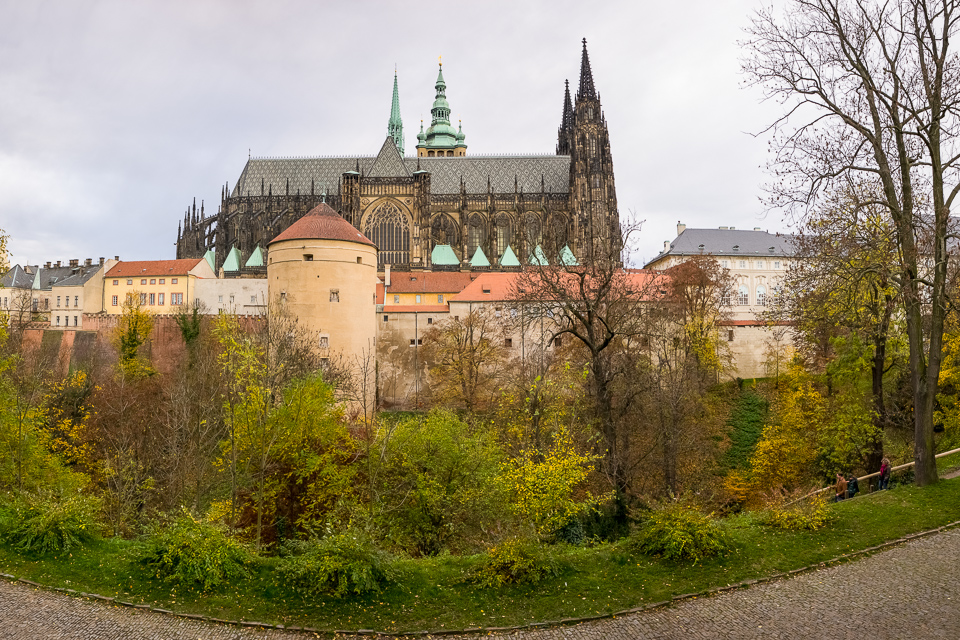
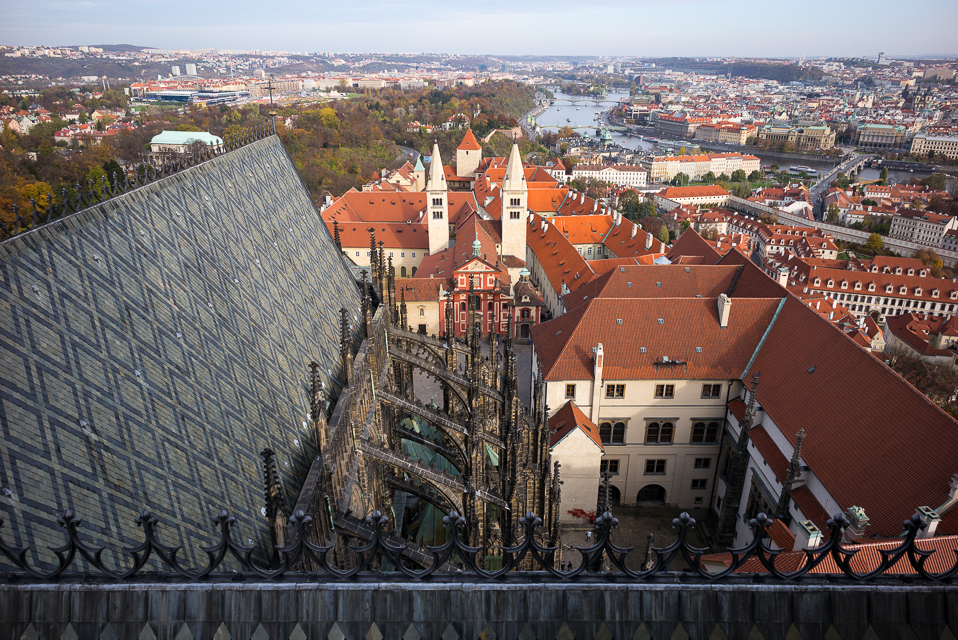
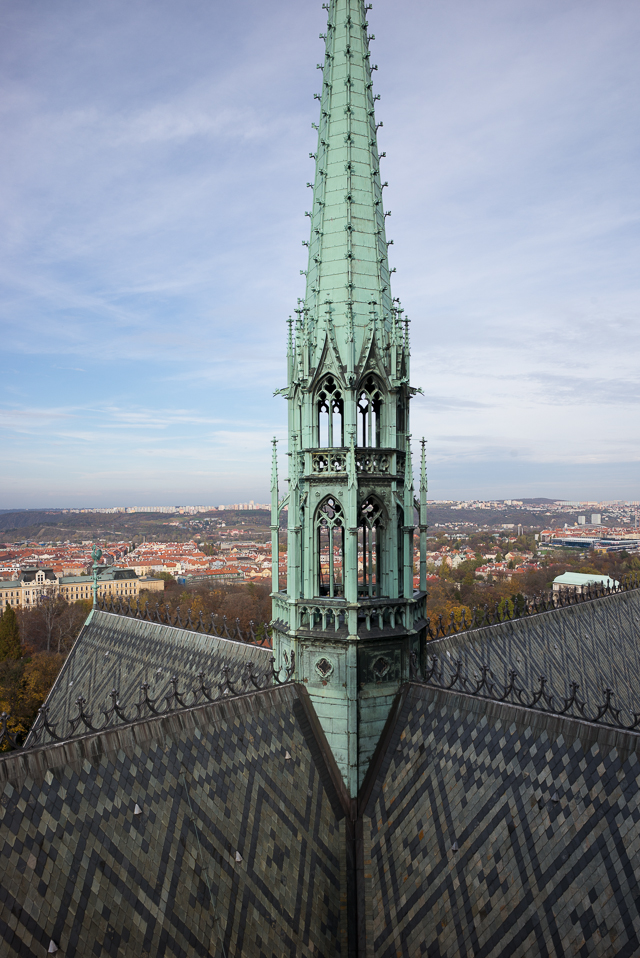
The cathedral takes up the place of honour within the large castle grounds, as can be seen from this night view from the Charles Bridge. This picture, as do the views from the cathedral towers themselves, clearly show the large extent and strategic position of the castle on top of a substantive ridge.
The location of the cathedral within the castle grounds also reminds one of the strong connection between church and state that existed in many, if not all, European states over the many centuries since the decline of the Western Roman empire. Prague itself was a powerful city and one-time capital within the broader Holy Roman Empire of greater Germany. This empire was a broad confederation of states, founded in 800 with the crowning of Charlemagne, and was to eventually dissolve in 1806. The cathedral houses the remains of many of the Bohemian kings of the empire.
Despite the hundreds of years that was to span the beginning and end of construction of the cathedral, the building is remarkably consistent in its design and presentation, and has a rather novel feeling of looking hundreds of years old, while also looking modern, not only due to the span of artistic styles of the windows, but he obvious pristine condition of much of the building (particularly, of course, the western part).
